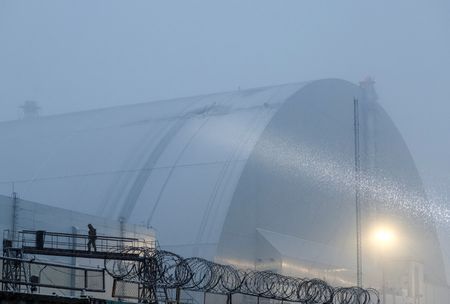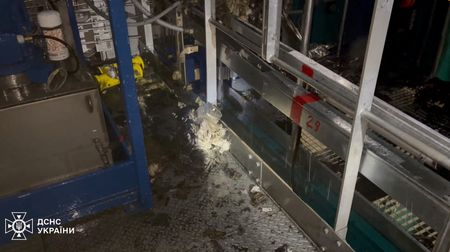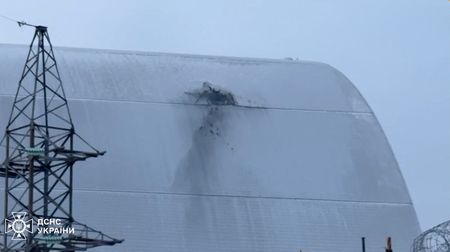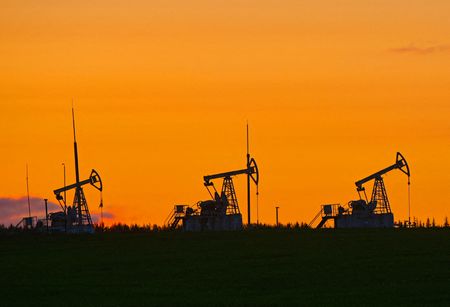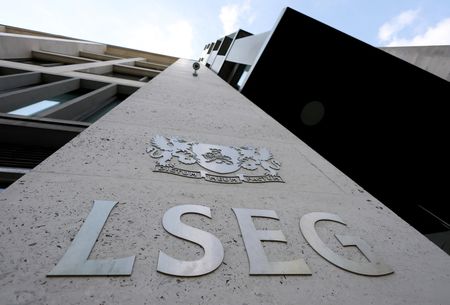KYIV (Reuters) – The Chornobyl Nuclear Power Plant, where Ukraine accused Russia of striking a radiation containment structure on Friday, is a defunct facility in Ukraine which was the site of the world’s worst civil nuclear catastrophe in April 1986.
Below are some facts about the plant and the accident:
The explosion at reactor four on April 26, 1986 was the result of human error by the Soviet engineers operating the plant.
Facility operators, in violation of safety regulations, had switched off important control systems at the Ukrainian plant’s reactor number four and allowed it to reach unstable, low-power conditions, according to a United Nations report.
A power surge led to a series of blasts, at 1:24 a.m. (2324 GMT), which blew off the reactor’s heavy steel and concrete lid and sent a cloud of radioactive dust billowing across northern and western Europe, reaching as far as the eastern United States.
DEATHS AND DAMAGE
One of the plant’s reactors, number four, exploded emitting vast quantities of radiation.
The disaster contaminated an area of 150,000 square kilometres in Ukraine, Belarus and Russia, according to the International Atomic Energy Agency (IAEA). A 30-km (19-mile) exclusion zone is in place round the site.
The Chernobyl Forum, a group of eight U.N. agencies, and the governments of Ukraine, Belarus and Russia, have estimated the death toll at several thousand as a result of the explosion. U.N. agencies have said some 4,000 people will die in total because of radiation exposure.
Environmental group Greenpeace puts the eventual death toll far higher than official estimates, with up to 93,000 extra cancer deaths worldwide.
CONTAINMENT
In the months after the 1986 disaster, the Soviet Union built a structure around the exploded reactor to contain radiation from the vast quantities of uranium still inside.
However, in subsequent years international concerns began to grow that the original structure was not fit for purpose.
U.S. engineering company Bechtel said on its website there were many gaps, and most of the sarcophagus was not secured to the underlying structure, leaving the enclosure vulnerable to leaking rainwater, settling, and earthquakes.
Money was raised from 45 countries and donor organisations to build the New Safe Confinement structure, a vast steel and concrete arch, over the top of the old Soviet one.
Engineers shut down the last functioning reactor at Chornobyl, number three, in December 2000.
The structure was officially completed and handed over to the Ukrainian government in 2019, with the ceremony being attended by President Volodymyr Zelenskiy.
(Reporting by Max Hunder; Editing by Sharon Singleton)


